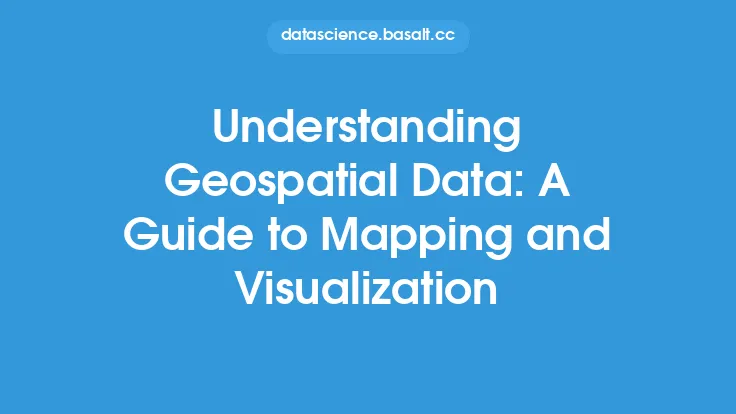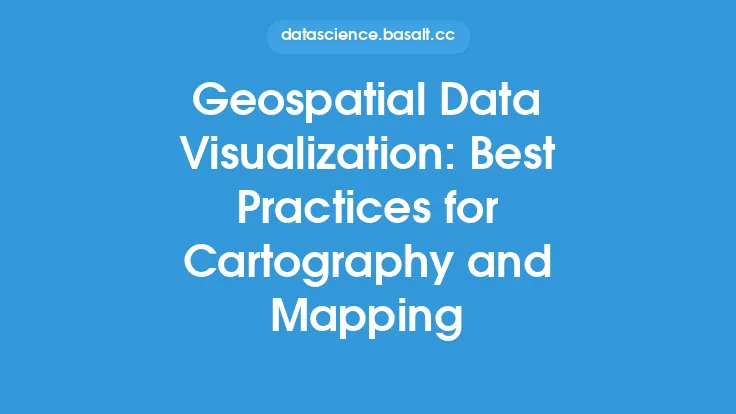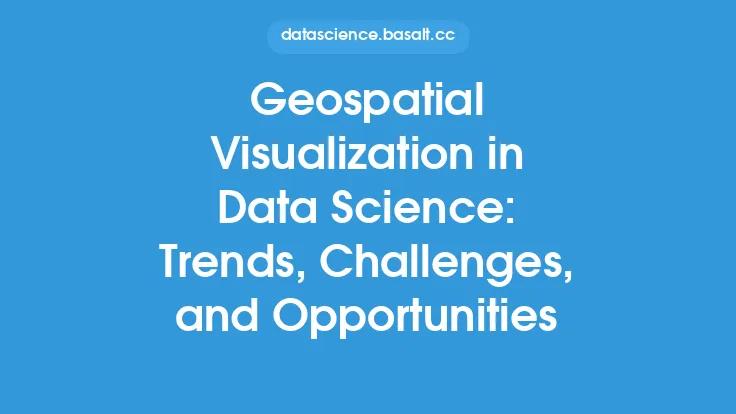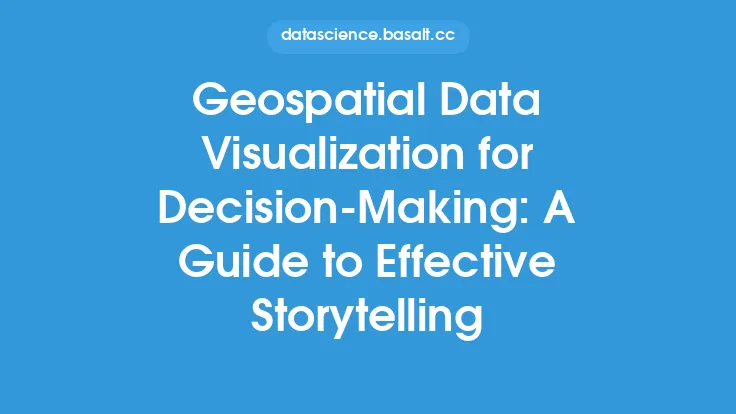Geospatial data is a unique and complex type of data that combines traditional data analysis with geographic information. It has become increasingly important in various fields such as urban planning, environmental monitoring, and emergency response. Visualizing geospatial data is a crucial step in understanding and communicating the insights and patterns hidden within the data. In this article, we will delve into the world of spatial analysis and mapping, exploring the fundamental concepts, techniques, and tools used to visualize geospatial data.
Introduction to Spatial Analysis
Spatial analysis is the process of examining and understanding the relationships between geographic phenomena. It involves using statistical and mathematical techniques to analyze and interpret geospatial data. Spatial analysis can be used to identify patterns, trends, and correlations between different variables, such as population density, climate, and economic activity. There are several types of spatial analysis, including spatial autocorrelation, spatial regression, and spatial interpolation. Spatial autocorrelation measures the similarity of neighboring values, while spatial regression analyzes the relationship between a dependent variable and one or more independent variables. Spatial interpolation, on the other hand, estimates the value of a variable at an unsampled location based on the values of nearby sampled locations.
Mapping and Geospatial Visualization
Mapping is a critical component of geospatial visualization, as it provides a visual representation of the data. Maps can be used to display a wide range of data, from simple points and lines to complex polygons and networks. There are several types of maps, including thematic maps, topographic maps, and cartograms. Thematic maps display specific data or themes, such as population density or climate zones. Topographic maps, on the other hand, show the physical features of an area, including elevation, water bodies, and land use. Cartograms are maps that distort the size and shape of geographic features to convey specific information, such as the number of people living in a particular area.
Geospatial Data Formats
Geospatial data comes in a variety of formats, including vector, raster, and network data. Vector data represents geographic features as points, lines, and polygons, while raster data represents data as a grid of pixels. Network data, on the other hand, represents the relationships between different locations, such as roads, rivers, and boundaries. Common geospatial data formats include shapefiles, GeoTIFFs, and GeoJSON. Shapefiles are a popular format for vector data, while GeoTIFFs are commonly used for raster data. GeoJSON is a lightweight format for encoding geospatial data in JSON.
Spatial Reference Systems
Spatial reference systems (SRS) are used to define the coordinate system and projection of a map. A coordinate system is a set of rules for assigning coordinates to locations on the Earth's surface, while a projection is a way of representing the curved surface of the Earth on a flat map. There are several types of SRS, including geographic coordinate systems, projected coordinate systems, and vertical coordinate systems. Geographic coordinate systems use latitude and longitude to define locations, while projected coordinate systems use a projected coordinate system, such as UTM or State Plane. Vertical coordinate systems, on the other hand, define the height or depth of a location.
Tools and Software for Geospatial Visualization
There are many tools and software available for geospatial visualization, ranging from simple mapping libraries to complex geographic information systems (GIS). Some popular tools and software include QGIS, ArcGIS, Leaflet, and D3.js. QGIS and ArcGIS are powerful GIS software that offer a wide range of tools and features for spatial analysis and mapping. Leaflet is a popular JavaScript library for creating interactive maps, while D3.js is a powerful data visualization library that can be used to create a wide range of geospatial visualizations.
Best Practices for Geospatial Visualization
When creating geospatial visualizations, there are several best practices to keep in mind. First, it's essential to choose the right map projection and coordinate system for the data and the story being told. Second, the visualization should be clear and intuitive, with a simple and consistent color scheme and typography. Third, the visualization should be interactive, allowing the user to explore the data in more detail. Finally, the visualization should be accurate and reliable, with proper attribution and citation of the data sources.
Common Challenges in Geospatial Visualization
Geospatial visualization can be challenging, especially when working with large and complex datasets. Some common challenges include data quality and accuracy, scalability and performance, and cartographic design. Data quality and accuracy are critical, as errors or inconsistencies in the data can lead to misleading or inaccurate visualizations. Scalability and performance are also important, as large datasets can be slow to render and interact with. Cartographic design is another challenge, as the visualization should be clear, intuitive, and visually appealing.
Future Directions in Geospatial Visualization
Geospatial visualization is a rapidly evolving field, with new technologies and techniques emerging all the time. Some future directions include the use of artificial intelligence and machine learning, the integration of geospatial data with other types of data, and the development of more interactive and immersive visualizations. Artificial intelligence and machine learning can be used to automate many tasks in geospatial visualization, such as data processing and analysis. The integration of geospatial data with other types of data, such as social media and sensor data, can provide new insights and perspectives. Finally, the development of more interactive and immersive visualizations, such as virtual and augmented reality, can provide a more engaging and effective way to communicate geospatial information.





